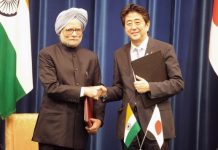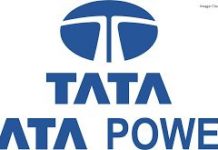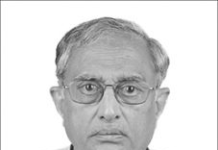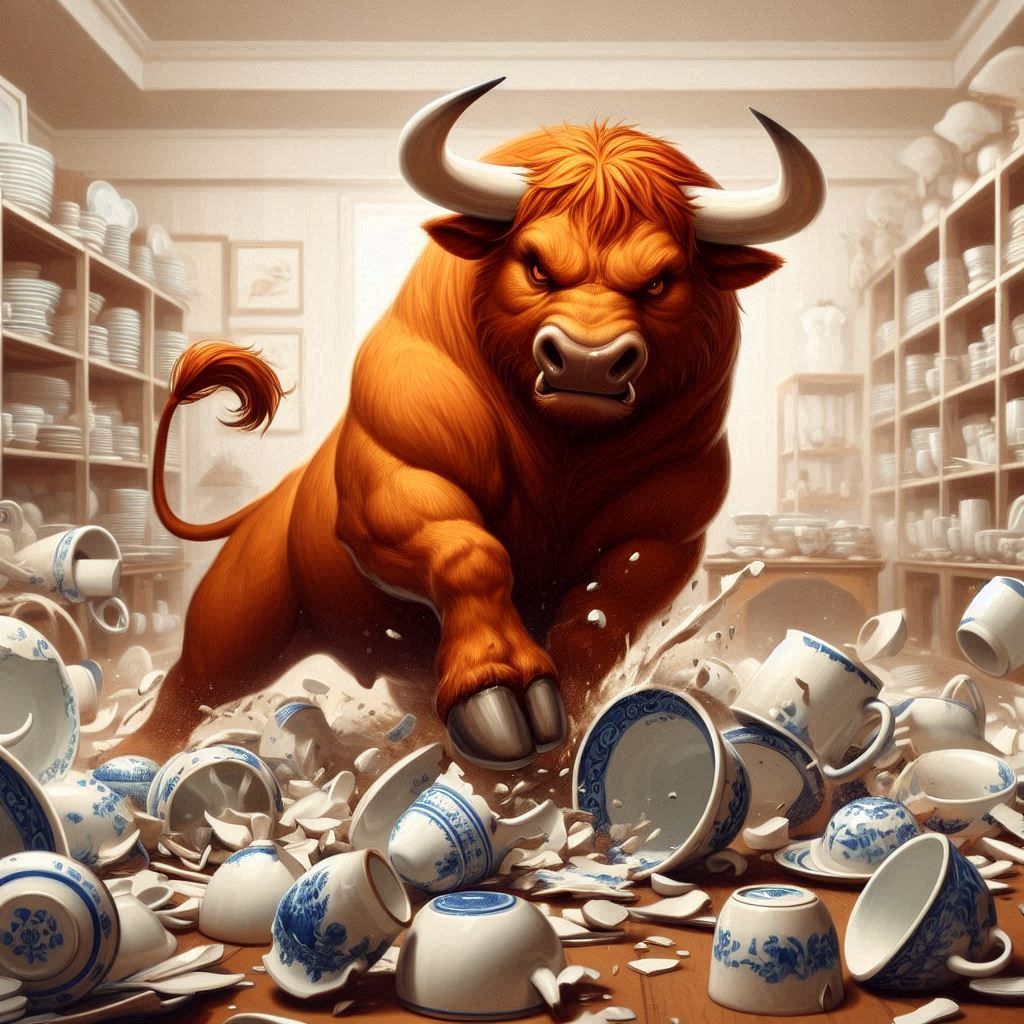MARKET PERSPECTIVE
By J Mulraj
MAY 24- JUNE 1, 2025
Is there a method in the madness?
Image created by Bing
USA has a debt of $ 36 trillion. Annual interest on this is over $ 1 trillion, the largest item of expenditure in it’s Budget. In calendar 2026 $ 3 trillion falls due for repayment and needs to be funded through fresh borrowing. After Moody’s became the third agency to lower US credit rating, the cost of rolling over will br higher. So reduction of debt is extremely urgen
To understand the debt situation better, it’s necessary to delve a bit into history.
After WW II ended in 1945, leading nations of the World met at Bretton Woods, and signed an Agreement. The US came out of WW II as the healthiest economy; European economies were devastated fighting the war. Under the agreement, other countries pegged their currencies to the US $, which, in turn, pegged itself to gold at a fixed rate of $ 35/ ounce. The US Government promised to redeem a $ for gold, at that fixed rate, up until the time President Nixon shocked the world on August 15, 1971, by breaking that promise.
He broke it because, between 1945, when, thanks to the Bretton Woods Agreement, the US got the ‘extraordinary privilege’ of being the only internationally accepted currency, globally, and 1971, when Nixon gave the shock, the US fought several, financially debilitating, wars.
The major wars fought by USA in this period were the Korean War (1950-53) and the Vietnam War (1962-73). USA printed $s to finance the Vietnam war. It also ran up budget deficits for several years. Anticipating US financial weakness, France, under President De Gaulle, bought huge quantities of dollars and asked USA to convert them into gold at the agreed price of $35/ounce. Soon, other countries followed. Nixon knew there wasn’t enough gold to meet the demands and, on August 15, 1971, publicly reneged on the promise to convert $ into gold at a price of $ 35/ounce.
In effect, the USD became a fiat currency, not backed by gold or other asset, which allowed USA to print it’s way out of trouble. It was the start of fiscal profligacy.
The US lived beyond it’s means for decades, borrowing money to fund over consumption. This excessive consumption was funded by other countries, because of US’s ‘extraordinary privilege’. It also waged several wars, in the Persian Gulf (1991), Afghanistan (2001) and Iraq (2003). The last two cost it a trillion dollars each.
Fiat currency, unbacked by gold, after the Nixon shock, allowed Presidents to spend money as if it grew on trees. It did not, but grew on printing presses. The past 3 Presidents splurged on pet projects; Obama increased debt by $7.6 trillion in his term, Trump by $7.8 t and Biden by $ 8.4 trillion. Normally such profligacy would be punished by hyper inflation, but US was saved by its ’extraordinary privilege’ and by China being able to supply manufactured goods at low costs.
We now come to current times.
Corporate America follows Shareholder Capitalism, whose aim is to focus on the interest of shareholders (increasing shareholder value) ahead of the interest of other stakeholders (employees, customers, suppliers). In this quest, it has outsourced manufacturing capability to other countries, with lower costs, especially of labour. It retained manufacturing capabilities in high end products like cars, aviation, defense equipment and others.
America’s advantages lie in its startup ecosystem that funds new ventures; in its ability to fund and develop new technologies, and in advance defense technologies (arms exports in 2024 were $ 318 b., 43% of global exports).
So Donald Trump’s agenda includes:
> reduction of US debt
> bringing back manufacturing facilities, and jobs, to USA
> containment of China
Trump launched a tariff war, imposing tariffs he claimed were retaliatory (ie at the same rate as the other country was imposing). In truth the tariff rates weren’t retaliatory but arbitrary, computed in a manner to, if actually levied, nullify the US trade deficit with that country. Tariff levels on China were set at a ludicrously high level of 150% – no business in the world has such margins. Trump hoped that the madness of high tariffs would lead to capitulation.
Just on May 29, a district court ruled that some tariffs were illegal. There were three levels :
* a 10% tariff on almost every country
* higher tariffs on Canada, Mexico and China to pressure them to stop flow of illegal fentanyl
* industry specific tariffs of 25% on steel, aluminum and cars.
The court blocked the first two, on the grounds that Trump could not use the law he cited, to impose them, but allowed the third to remain.
This judgement was suspended (pending judgement) on May 30.
Both US, the biggest importer of manufactured goods, and China, the biggest exporter, will suffer, indeed already are suffering, in this crazy trade war. No business can plan ahead to ensure stability of their supply chains. Businesses are holding back on investment, which is affecting employment growth. Chinese manufacturers, shorn of American orders, are laying off widely.
Airbus Industries has stated that it cannot supply planes to Us Airlines at these tariff rates. Passengers in USA will see fewer choices of flights and fares, and the lack of competition will make Airbus and Boeing complacent.
Trumps rants are turning his allies away. He wants to buy/merge with Canada, acquire Greenland one way or another, and retake control over Panama Canal. He has publicly humiliated world leaders in the White House, including Zelenskyy, Starmer, Macron, and, now, Ramaphosa. Someone should present him Dale Carnegie’s book.
Trump is also venting his angst against American companies and institutions. Like Apple, which he is pressuring to stop IPhone assembly in India. This is so bizarre as to make one wonder whether Trump’s arguments are based on logic or on emotion. The labour cost in India constitutes only 3% of the retail selling price; this would be far higher if assembled in USA. I think someone should also present him with a Michael Porter book.
Or like John Deere (JD), the US leader in farm equipment, reputed for product quality and innovation. Now, in view of weak demand for farm equipment, JD announced plans to move manufacture of medium sized construction loaders to Mexico, to lower their cost and help sales. This riled Trump, who threatened to levy high tariffs on such loaders. This is a piquant situation, as it pitches Trump’s inflexible stance on retaining American jobs against his need to support rural farmers, which Deere supplies equipment to, and who form his core voter base.
Trump is creating chaos at Harvard by blocking foreign students from being enrolled. Foreign students pay full fare, and spend $44 b. on higher education. Universities like Harvard are given grants by the US Congress for studies on which they do research, for Congress, which approves the proposals first. It is outsourcing of research by Congress to University students, and not a free grant. Luckily, a federal judge has blocked the Trump ban.
China has hit back by selling US Treasury bonds held by it, and Japan (the largest foreign holder of them) plans to. This has driven up the 20 year US bond yield to 4.94 %. This makes it costlier for the US to rollover the $ 3 trillion.
This recent article in the Wired magazine shows how China is now dominating the auto industry. It’s range of car options displayed at the Auto Shanghai motor show was reminiscent of the shows in earlier days when Western automobiles dominated.
Indian stock markets are rather stoic about the Trumpian rants. Last week the Sensex was steady, dropping just 270 points to end at 81451. Domestic retail investors, with SIP commitments, are providing liquidity to keep the Sensex up.
India’s food grain production in 2024-25 is estimated at an all time high of 354 million tonnes, up 6.6%. India’s AMCA (Advanced Medium Combat Aircraft) is progressing well and, as per this video, it will be a superior, world class aircraft with stealth features, advanced avionics and impressive firepower. Work on the Kaveri engine to power it, is also progressing well, with India looking to collaborate with Japan for producing it.
The course for global stock markets would be dependent on the ability of the global polity to take time off for some contemplation. That seems quite a big ask.
Comments may be sent to jmulraj@asiaconverge.com










































COMMENTS